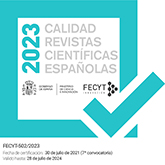Does the length of station record influence the warming trend that is perceived by mongolian herders near the Khangai Mountains?
DOI:
https://doi.org/10.3989/Pirineos.2012.167004Keywords:
Climate change, warming, Mongolia, statistical significance, herder perceptionsAbstract
Temperatures changes can be difficult to infer from changes in vegetation patterns or other ecological changes, yet warming can be inferred through changes in the habits of people who live in close connection with their natural environment. Herders near the Khangai Mountains of central Mongolia have perceived a warming trend in recent years. Since it is difficult to determine the exact time period over which perceived warming has occurred, we examined the statistical difference in changes based on the length of data and the specific period of record used in the analysis. We used temperature data from five meteorological stations for up to 50 years (1961-2010). We examined varying lengths of record from 15 to 50 years with varying start periods (1961 through 1986), based on the length of record. We found that the most statistically significant changes occurred for the longest time periods and for the annual average minimum temperatures. We also found that one very cold winter, in particular 2009-2010 decreased the warming trend and for shorter periods of record reduced the statistical significance.
Downloads
References
Alexander, C., Bynum, N., Johnson, E., King, U., Mustonen, T. & Neofotis, P., 2011. Linking Indigenous and Scientific Knowledge of Climate Change. Bio Science, 61(6): 477-484. http://dx.doi.org/10.1525/bio.2011.61.6.10
Angerer, J., Han, G., Fujisaki, I. & Havstad, K., 2008. Climate change and ecosystems of Asia with emphasis on Inner Mongolia and Mongolia. Rangelands, 30(3): 46-51. http://dx.doi.org/10.2111/1551-501X(2008)30[46:CCAEOA]2.0.CO;2
Barnett, T. P., Adam, J. C., & Lettenmaier, D. P., 2005a. Potential impacts of a warming climate on water availability in snow-dominated regions. Nature, 438(7066): 303-309. http://dx.doi.org/10.1038/nature04141 PMid:16292301
Barnett, T., Zwiers, F., Hegerl, G., Allen, M., Gillett, N. & Hasselmann, K., 2005b. Detecting and Attributing External Influences on the Climate System: A Review of Recent Advances. Journal of Climate, 18(9): 1291-1314. http://dx.doi.org/10.1175/JCLI3329.1
Batima, P., Natsagdorj, L., Gombluudev, P., & Erdenetsetseg, B., 2005. Observed Climate Change in Mongolia, Assessments of Impacts and Adaptations to Climate Change (AIACC) Working Paper No. 12, 120-129, Ulaanbaatar, Mongolia.
Begzsuren, S., Ellis, J.E., Ojima, D.S., Coughenour, M.B., & Chuluun, T., 2004. Livestock responses to droughts and severe winter weather in the Gobi Three Beauty National Park, Mongolia.Journal of Arid Environments, 59: 785-796. http://dx.doi.org/10.1016/j.jaridenv.2004.02.001
Chen, Z. & Grasby, S., 2009. Impact of Decadal and Century-Scale Oscillations on Hydroclimate Trend Analyses. Journal of Hydrology, 365(1-2): 122-133. http://dx.doi.org/10.1016/j.jhydrol.2008.11.031
Dagvadorj, D., 2010. Mongolia Second National Communication, Under the United Nations Framework on Climate Change, Ministry of Nature, Environment, and Tourism, 160 pp., Ulaanbataar, Mongolia.
Daly, C., 2006. Guidelines for assessing the suitability of spatial climate data sets. International Journal of Climatology, 26: 707-721. http://dx.doi.org/10.1002/joc.1322
Fassnacht, S. R., Sukh, T., Fernandez-Gimenez, M., Batbuyan B., Venable, N. B. H., Laituri, M., & Adyabadam, G., 2011. Local understanding of hydroclimatic changes in Mongolia. Cold Region Hydrology in a Changing Climate (Proceedings of symposium H02 held during IUGG2011 in Melbourne, Australia, July 2011), IAHS Publ. 346, 120-129.
Fernández-Giménez, M., Batbuyan B. & Batkhishig B., 2011. Understanding Resilience in Mongolian Pastoral Social-ecological Systems, Adapting to Disaster, Before, During, and After the 2010 Dzud-Year 1 Report. Colorado State University & The Center For Nomadic Pastoralism Studies, 119 pp., Fort Collins, Colorado, USA.
Gilbert, R. O., 1987. Statistical Methods for Environmental Pollution Monitoring. John Wiley & Sons, New York, 320 pp.
Hansen, J., Ruedy, R., Sato, M., & Lo, K., 2010. Global Surface Temperature Change. Reviews of Geophysics, 48(4): RG4004. http://dx.doi.org/10.1029/2010RG000345
Jamiyansharav, K., 2010. Long-term analysis and appropriate metrics of climate change in Mongolia. Unpublished PhD Dissertation, Graduate Degree Program in Ecology, Colorado State University, 135 pp., Fort Collins, Colorado, USA.
Klein Tank, A. M. G., Peterson, T. C., Quadir, D. A., Dorji, S., Zou, X., Tang, H., 2006. Changes in daily temperature and precipitation extremes in central and south Asia. Journal of Geophysical Research, 111, D16105. http://dx.doi.org/10.1029/2005JD006316
Marin, A., 2010. Rider under storms: Contributions of nomadic herder’s observations to analyzing climate change in Mongolia. Global Environmental Change, 20: 162-176. http://dx.doi.org/10.1016/j.gloenvcha.2009.10.004
Pepín, N. C. & Lundquist, J. D., 2008. Temperature trends at high elevations: Patterns across the globe. Geophysical Research Letters, 35, L14701.
Pielke SR, R. A., Stohlgren, T., Schell, L., Parton, W., Doesken, N. & Redmond, K., 2002. Problems in evaluating regional and local trends in temperature: an example from eastern Colorado, USA. International Journal of Climatology, 22(4): 421-434. http://dx.doi.org/10.1002/joc.706
Solomon, S., Qin, D., Manning, M., Chen, Z., Marquis, M., Averyt, K. B., Tignor, M., & Miller, H. L., eds., 2007. Climate Change 2007: The Physical Science Basis. Contribution of Working Group I to the Fourth Assessment Report of the Intergovernmental Panel on Climate Change. Cambridge University Press, 237-383, Cambridge, United Kingdom.
UN Mongolia Country Team, 2010. Mongolian Dzud Appeal. United National Development Programme, Office for the Coordination of Humanitarian Affairs, Consolidated Appeal, 53pp.
Yu, F., Price, K. P., Ellis, J. & Shi, P. 2003. Response of seasonal vegetation development to climatic variations in eastern central Asia. Remote Sensing of the Environment, 87(1):42-54. http://dx.doi.org/10.1016/S0034-4257(03)00144-5
Downloads
Published
How to Cite
Issue
Section
License
Copyright (c) 2012 Consejo Superior de Investigaciones Científicas (CSIC)

This work is licensed under a Creative Commons Attribution 4.0 International License.
© CSIC. Manuscripts published in both the printed and online versions of this Journal are the property of Consejo Superior de Investigaciones Científicas, and quoting this source is a requirement for any partial or full reproduction.All contents of this electronic edition, except where otherwise noted, are distributed under a “Creative Commons Attribution 4.0 International” (CC BY 4.0) License. You may read here the basic information and the legal text of the license. The indication of the CC BY 4.0 License must be expressly stated in this way when necessary.
Self-archiving in repositories, personal webpages or similar, of any version other than the published by the Editor, is not allowed.













